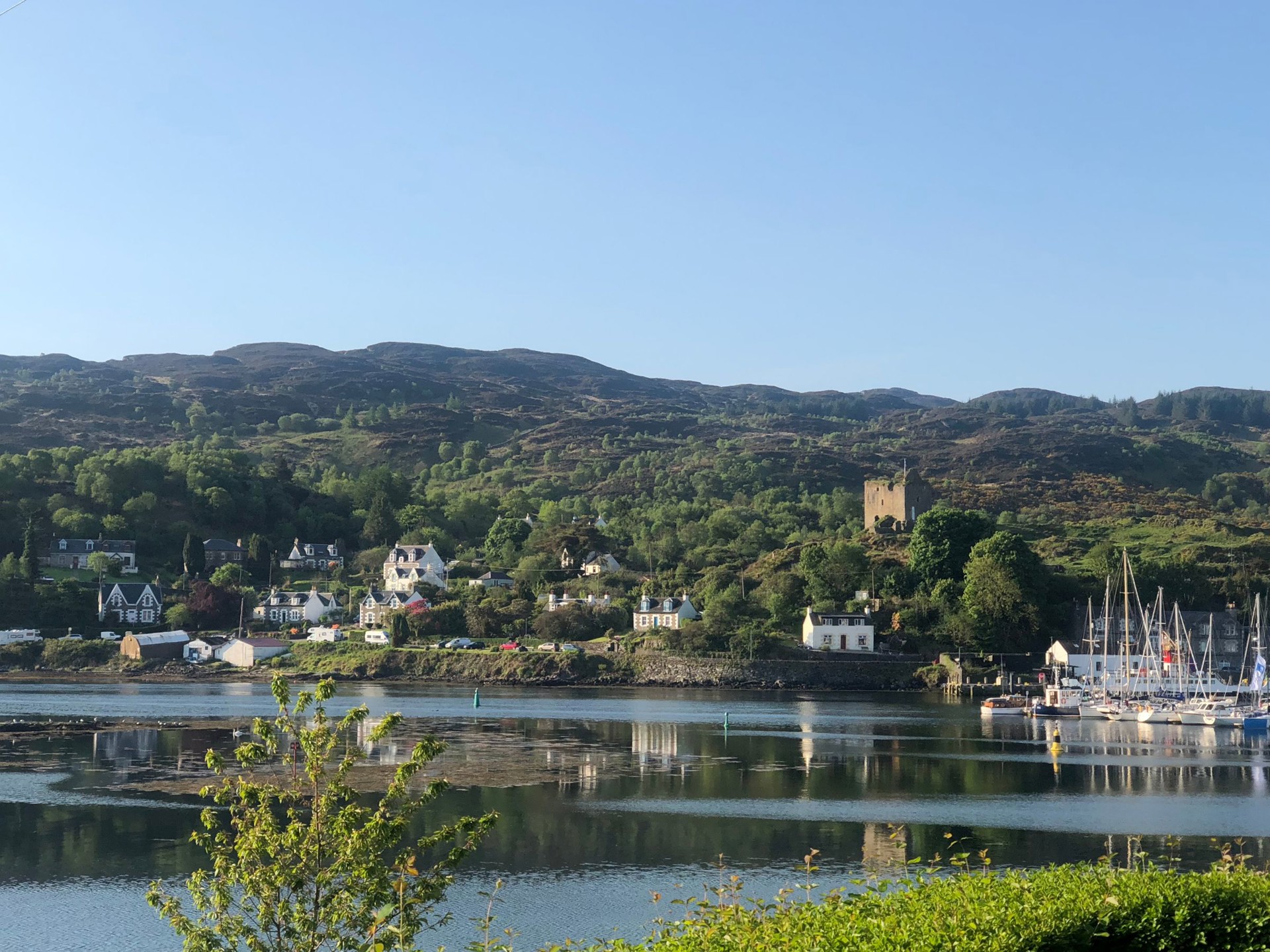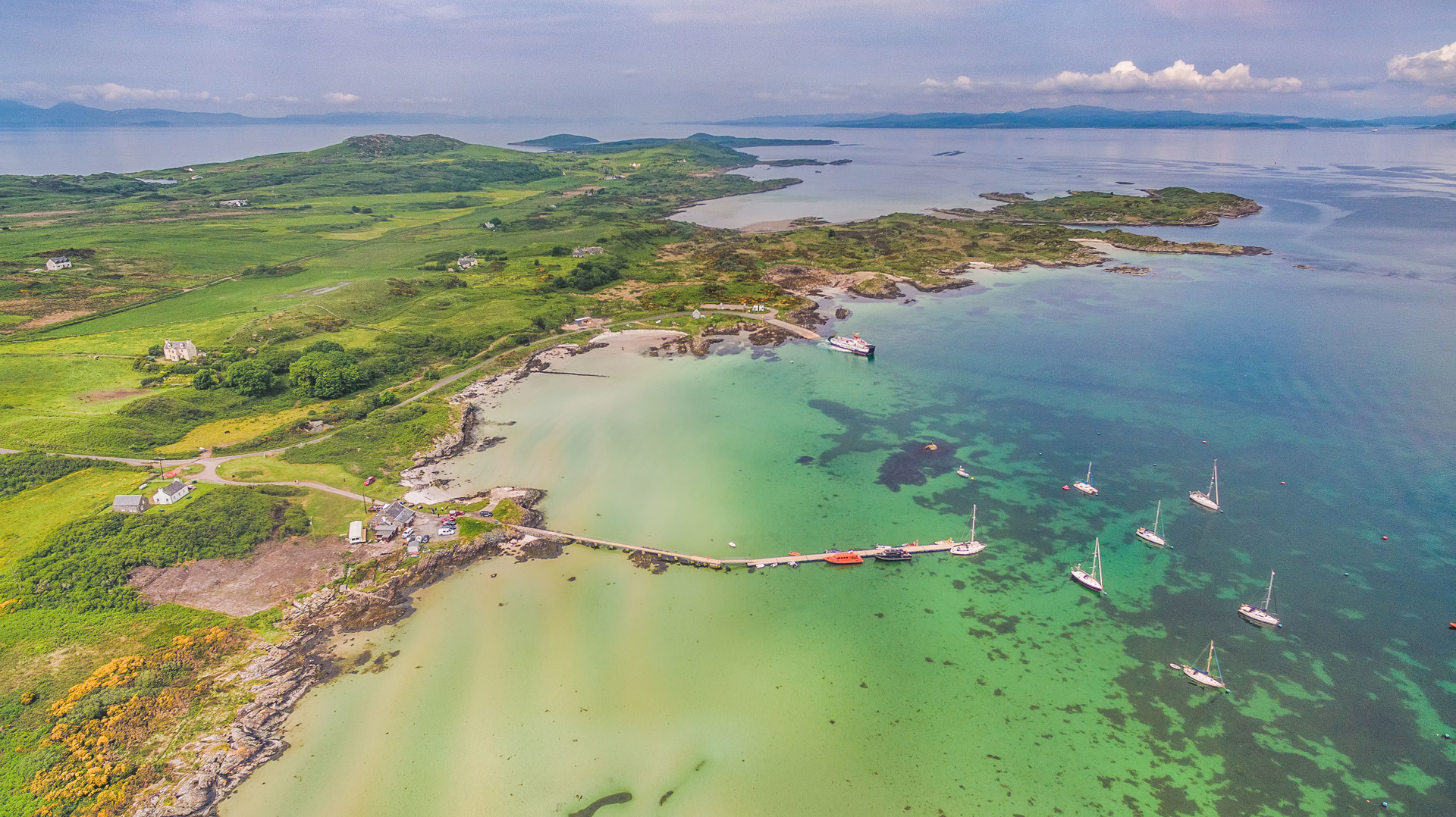Make a Pilgrimage to East Kintyre
Kilbrannan Chapel, Skipness
This church stands on the Eastern shore of Skipness Bay about 300 metres East of Skipness Castle. Five late Medieval funerary stones are contained within the confines of the ruined church or adjoining graveyard, each with different examples of funerary engraving. Some have Crucifixion scenes, other ones with images of Saint Mary and John. The usual military depictions of swords, spears, and armour are also there for all to see. West Highland Grave Slabs abound in Kintyre’s ecclesiastical landscape.
An earlier chapel dedicated to Saint Columba used to stand on site, but its stones were incorporated into the castle building. The existing ruins are dedicated to Saint Brendan.
Saddell Abbey
The fragmentary remains of the Cistercian Abbey stand near the mouth of Saddell Glen, about 13 kilometres North of Campbeltown. The remaining ruins were stabilised in 2003 and a new interpretation housing was built. The new centre contains a collection of West Highland Funerary Stones, arguably the finest collection of stones in the West Highlands. The Abbey was built by Reginald, son of Somerled, Thane of Argyll, and was dedicated in the name of his father in or around 1160 AD.
Somerled is famous as the man who overcame the influence of Norse rule, a Celtic / Gaelic revival of the Western Highlands. He died at the Battle of Renfrew and is reputedly buried at Saddell Abbey. The grandsons of Somerled were progenitors of some of the most famous clan systems in the west, Clan Donald, Dougall and Ranald. Somerled himself is known as the first Lord of the Isles, a title held by Prince Charles until his recent accession to the throne, the same title now passing to Prince William, King Charles 111 eldest son.
The Old Parish Church of Kilchousland
edge some 3.5 kilometres North of Campbeltown. The church was dedicated to Saint Constantine, an early monarch of Celtic Scotland who abdicated and committed his life to Christianity. Legend has it that Constantine was killed in or near the site of the now ruined church. Like most of the Medieval chapels in Kintyre, Kilchousland has its share of West Highland Funerary stones, but it also has a number of interesting 18th century gravestones of prominent Campbeltown artisans and merchants, a period in which the economy of the Royal Burgh was at its most enterprising.
Tarbert Loch Fyne Parish Church
The church hosts both our Tarbert and Kilberry churches along with the Free church. It is a Georgian style category B listed church and dates back to 1775.
Kilberry Standing Stones
The Kilberry Sculptured Stones cover a range of styles and eras – from early Christian grave-slabs to late-medieval cross fragments. They include the medieval Kilberry Cross, a broken cross-shaft.
Most of the stones were moved into the basement of Kilberry Castle in 1948, and placed in a purpose-built shelter in 1951. The cross joined them in 1997.
The collection probably originates from the medieval parish church that stood near the Campbell of Kilberry mausoleum. It is first mentioned in the 1300s, and said to have been burnt down in the 1640s.



